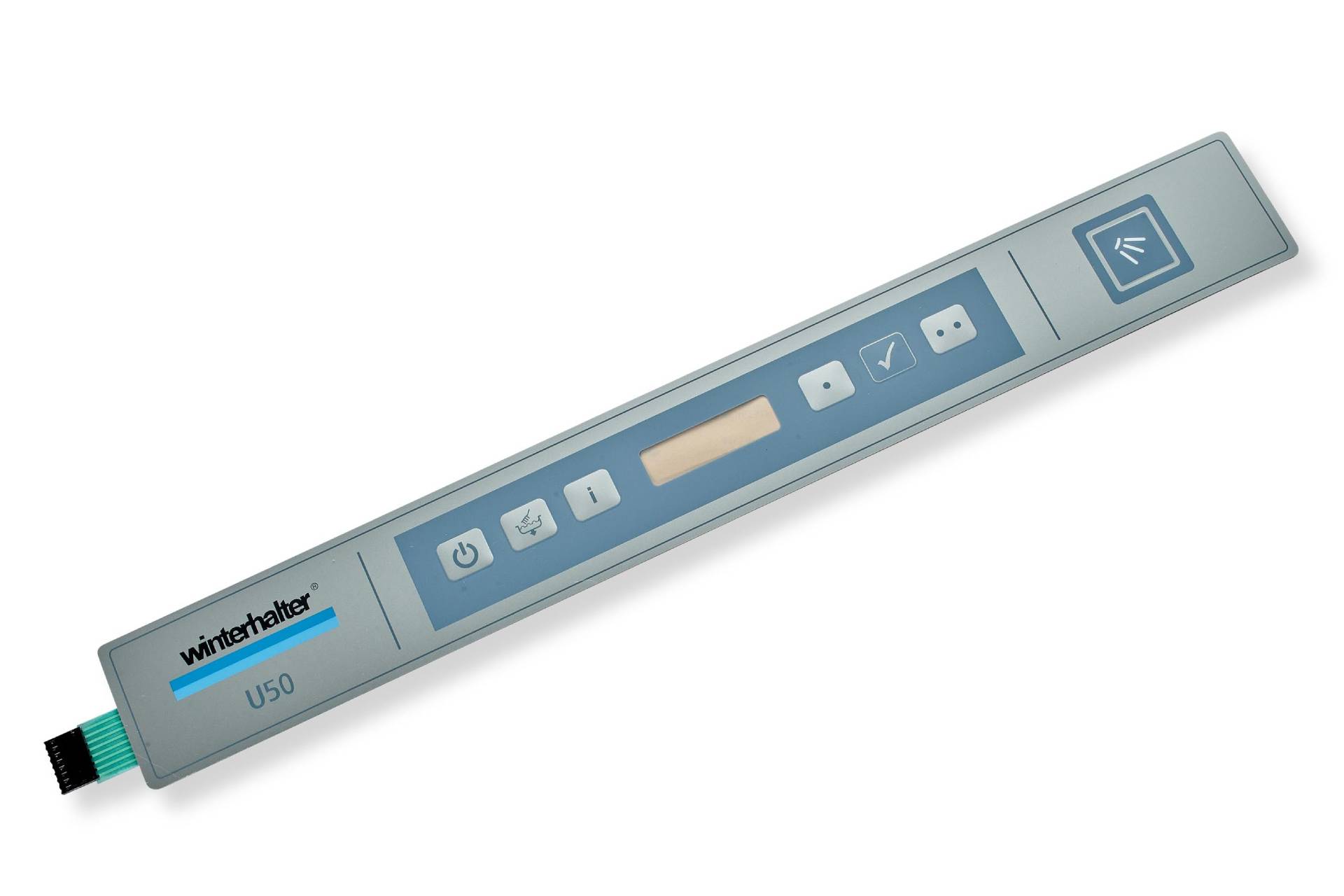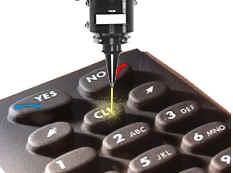The environmental impact of producing Rubber Keypads and sustainable alternatives
Discovering the Manufacturing Process Behind Rubber Keypads and Their Importance in Modern Instruments
Rubber keypads are pivotal in the capability of modern devices. Their production procedure includes mindful choice of products and exact techniques. Keypads are made to enhance customer interaction while guaranteeing durability and dependability. Comprehending exactly how these parts are made exposes their relevance throughout numerous applications. What factors add to their efficiency, and how do these components affect user experience? The answers might improve assumptions of this day-to-day technology.
Introduction of Rubber Keypads and Their Applications

Rubber keypads are flexible parts extensively used in numerous digital gadgets, varying from consumer electronics to commercial devices. Their style enables a tactile response, making them an optimal choice for applications requiring individual communication. Generally located in products such as push-button controls, calculators, and clinical gadgets, rubber keypads facilitate convenience of usage and availability.
In industrial setups, they serve crucial features in machinery and control board, where longevity and resistance to ecological factors are crucial. The non-slip surface enhances grip, advertising reliability in requiring conditions. In addition, their light-weight nature and personalized shapes make it possible for producers to create customized solutions that fit particular demands. With innovations in modern technology, rubber keypads continue to advance, incorporating functions like backlighting and boosted level of sensitivity. Overall, their versatility and practical benefits add greatly to the effectiveness of different tools throughout numerous sectors.
Products Utilized in Rubber Keypad Manufacturing
Keypad manufacturing counts on a selection of products that improve both functionality and longevity. The primary product used in the production of rubber keypads is silicone rubber, recognized for its superb durability and adaptability. This product permits keypads to hold up against duplicated pressing without shedding shape or performance. Additionally, thermoplastic elastomers (TPE) are commonly made use of as a result of their convenience of molding and capability to supply a soft-touch feeling.
Coloring agents, such as pigments, are included to assure vivid, lasting hues that boost visual charm. In addition, ingredients like anti-UV representatives and flame retardants might be blended into the rubber to improve weather condition resistance and safety and security conformity. The option of products straight affects the keypad's tactile feedback, longevity, and total efficiency in different gadgets. Ultimately, the careful option of these parts is essential for the production of top notch rubber keypads that fulfill customer and market needs.
The Style Process of Rubber Keypads
When developing rubber keypads, the style process plays a vital role in establishing functionality and user experience. Designers start by specifying the keypad's planned usage, thinking about aspects such as the gadget it will certainly come with and the target individual market. This initial stage includes laying out formats that prioritize ergonomic aspects, making certain the keys are conveniently available and suitably spaced.
Next, developers concentrate on the responsive responses desired from the keypads, which affects the selection of products and crucial forms. Prototyping is crucial in this phase, enabling developers to test different layouts for comfort and responsiveness.

Production Techniques for Rubber Keypads
The manufacturing process for rubber keypads entails a collection of specific strategies that ensure high quality and performance. Fluid silicone rubber (LSR) is commonly utilized due to its sturdiness and adaptability. The procedure starts with mixing the raw materials, consisting of silicone, colorants, and curing representatives. This combination is then infused into molds made to shape the keypads accurately.
Following injection, the shaped keypads go through healing, a home heating procedure that strengthens the material (Rubber Keypads). This is normally done in a press, guaranteeing the keypads achieve the desired solidity and durability
Quality Control Actions in Manufacturing
To ensure that rubber keypads satisfy high requirements of quality and functionality, extensive quality assurance steps are applied throughout the manufacturing process. These actions begin with basic material inspection, guaranteeing that only the highest-grade elastomers are made use of. During the production phase, drivers conduct routine checks to keep track of specifications such as temperature, pressure, and blending times, important for achieving constant item top quality.
Post-production, each set of keypads goes through thorough testing, including tactile response analyses and sturdiness examinations to assess performance under numerous problems. Visual assessments are likewise carried out to determine any type of issues, such as bubbles or inconsistencies in appearance. Furthermore, compliance with sector criteria is validated, making sure that the keypads meet security and functionality benchmarks.
The Duty of Modern Technology in Keypad Development
Innovation plays a crucial duty in the development of rubber keypads by enabling advanced production methods that boost accuracy and effectiveness. Furthermore, ingenious material option allows for boosted toughness and responsiveness a knockout post in keypad performance. These innovations not just enhance manufacturing yet likewise elevate the total high quality of the end product.
Advanced Manufacturing Techniques
Improvements in production techniques transform the manufacturing of rubber keypads, enhancing both performance and precision. Technologies such as shot molding and 3D printing have actually changed typical processes, making it possible for suppliers to develop intricate styles with reduced waste and enhanced turnaround times. Automation plays a necessary function in this evolution, improving production line and reducing human mistake. In addition, computer-aided design (CAD) software enables elaborate customization, guaranteeing that keypads meet particular user requirements. Quality control steps have also advanced, incorporating real-time monitoring systems that find flaws early in the manufacturing cycle. These advancements not only improve the sturdiness and performance of rubber keypads however likewise support the expanding demand for customized solutions in various markets, from consumer electronics to auto applications.
Ingenious Material Option
The advancement of producing techniques has paved the means for cutting-edge product option in rubber keypad growth. Advances in polymer science have introduced materials that boost durability, versatility, and responsive comments. Manufacturers now use thermoplastic elastomers (TPE) and silicone compounds, which provide superior resistance to put on and environmental factors. These products enable the production of keypads that can sustain long term usage while keeping aesthetic allure. Furthermore, the assimilation of additives and coatings boosts capability, such as boosting grip and minimizing friction. The selection of materials is necessary, as it directly influences the efficiency and long life of keypads in different devices, from consumer electronic devices to industrial tools. This cutting-edge strategy remains to shape the future of keypad layout and functionality.
The Influence of Rubber Keypads on User Experience
Rubber keypads substantially influence individual experience via their boosted tactile response, which permits even more exact communication. Furthermore, their resilience and longevity contribute to constant efficiency with time, lowering the need for frequent substitutes. This mix of features makes rubber keypads a recommended selection in imp source numerous applications, ultimately influencing customer fulfillment.
Enhanced Tactile Response
Enhancing tactile feedback substantially affects customer experience, especially in tools that rely upon keypads for communication. Rubber keypads give an one-of-a-kind mix of soft qualities and resilience, enabling customers to feel unique responses with each press. This responses reinforces a sense of control and precision, critical in applications ranging from smart devices to industrial devices. Customers frequently report higher fulfillment and efficiency when communicating with devices that include well-designed rubber keypads, as they facilitate quicker and much more accurate input. In addition, the ergonomic design of these keypads can reduce finger tiredness, promoting longer usage periods without discomfort. In general, the improved tactile reaction provided by rubber keypads significantly adds to a more enjoyable and user-friendly customer experience in modern innovation.
Toughness and Durability
A key facet of individual experience with rubber keypads exists in their durability and durability. These keypads are made to endure comprehensive usage, withstanding deterioration that often affects various other products. The robust nature of rubber warranties that keypads keep their performance and look gradually, which is essential for gadgets often used in numerous settings. Individuals gain from the integrity of rubber keypads, as they can endure direct exposure to wetness, temperature level, and dust changes without weakening. This strength not just enhances individual fulfillment however also reduces the requirement for frequent substitutes, eventually adding to cost-effectiveness for suppliers. Basically, the toughness of rubber keypads greatly influences the total performance and individual experience in modern-day tools.
Often Asked Inquiries
How Lengthy Do Rubber Keypads Commonly Last in Gadgets?
Rubber keypads typically last in between 5 to one decade, depending on usage, environmental aspects, and top quality of products made use of (Rubber Keypads). Regular deterioration can reduce their lifespan, influencing performance and individual experience over time
Can Rubber Keypads Be Customized for Certain Applications?
Rubber keypads can indeed be personalized for details applications, permitting modifications in dimension, appearance, form, and color. This adaptability enables producers to produce tailored solutions that satisfy diverse user requirements and enhance performance in numerous tools.
Are Rubber Keypads Eco-friendly?
Rubber keypads are commonly ruled out environmentally friendly due to their petroleum-based products. Nevertheless, developments in sustainable production methods and the development of bio-based options are slowly enhancing their eco-friendly effect in numerous applications.
What Prevail Problems Encountered During Rubber Keypad Production?
Common issues encountered throughout rubber keypad manufacturing include inconsistent material top quality, mold and mildew defects, improper healing times, attachment failures, and obstacles in attaining exact tactile comments. These issues can result in lowered product efficiency and client frustration.
Just How Do Rubber Keypads Contrast to Various Other Sorts Of Key Switches Over?
Rubber keypads use a softer feeling and quieter procedure compared to mechanical switches, which offer tactile feedback. However, rubber keypads may wear out faster and lack the accuracy that some users like in high-performance applications.
The main material made use of in the production of rubber keypads is silicone rubber, known for its superb durability and flexibility. When developing rubber keypads, the design procedure plays an important function in determining functionality and user experience. Rubber keypads substantially influence customer experience through their enhanced responsive reaction, which enables for even more accurate communication. Customers commonly report better complete satisfaction and effectiveness when connecting with tools that feature properly designed rubber keypads, as they facilitate quicker and more exact input. A key facet of customer experience with rubber keypads lies in their longevity and check my site durability.